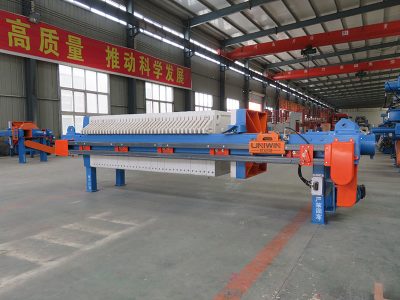
Plate and Frame Filter Press
Introduction to Plate and Frame Filter Press: The plate and frame filter press is widely used for solid-liquid separation in various industries. It is known
A filter press is a mechanical dehydration device that uses filter cloth to separate solids and liquids in different slurries.
The structure of the whole machine is simple, mainly consisting of filter plates, filter cloth, Beam, and hydraulic station, the separation effect is good, the operation is convenient, and the application range is wide. It is widely used in the fields of mining, petroleum, chemical industry, medicine, papermaking, food, coal washing, dying and waste water treatment.
Filter presses come in a variety of types and sizes and can be customized to meet the requirements of a specific application. Different types of filter presses include plate and frame filter presses, membrane filter presses, chamber filter presses, vertical press filter, belt filter press etc. Choosing a suitable filter press depends on the nature of the material to be filtered, the capacity and the required separation efficiency.
Uniwin manufactures many types of filter presses and filter press supporting equipment and accessories. We can choose a suitable filter press for you or customize a filter press according to your needs.We can also provide control panels to control the operation of the filter press as well as the operation of the pumps.

Introduction to Plate and Frame Filter Press: The plate and frame filter press is widely used for solid-liquid separation in various industries. It is known
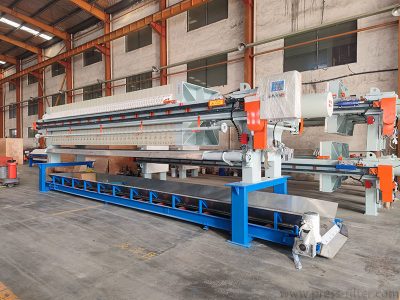
Membrane Filter Press A membrane filter press is a filter press that uses a membrane plate in combination with an ordinary filter plate. It uses
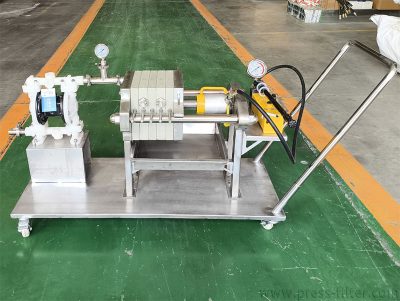
Introduction of the Laboratory Filter Press: The laboratory filter press is a specialized device used in scientific and research laboratories for small-scale solid-liquid separation processes,
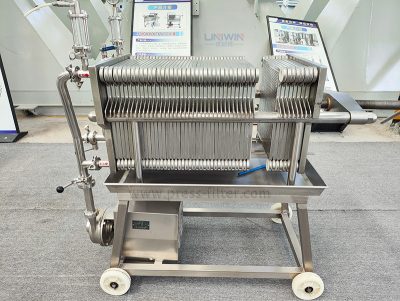
Introduction Stainless steel filter press, also known as stainless steel plate and frame filter press, is a continuous pressure solid-liquid separation equipment made of stainless
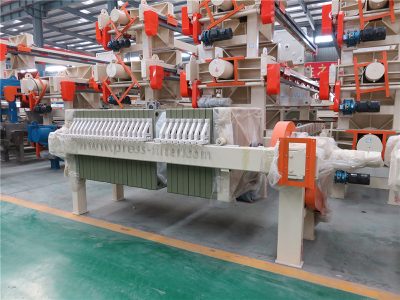
Gasketed CGR Filter Press Introduction: The gasketed CGR( Caulked Gasketed Recessed ) filter press is a filter press with gasketed filter cloth. What distinguishes a
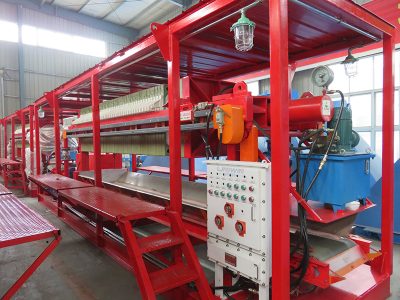
The mobile filter press is a filter press with a frame on the outside. It is usually installed on a special transport vehicle and can
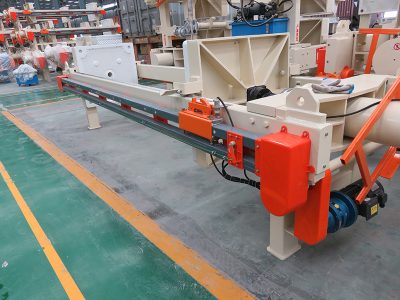 Since the filter plate of a large filter press is difficult to move, it can be used with an automatic pull-plate system (plate shifter). The pull-plate system consists of a motor, a hydraulic motor, a pull-plate trolley, a sprocket, a chain, etc. Under the control of a relay, the motor drives the hydraulic motor. The chain drives the left and right plate-pulling trolleys to complete the plate-pulling. The plate-pulling system adopts intelligent control, and the actions when pulling the plate are slow, fast, and slow, which can not only improve the plate-pulling efficiency but also protect the filter plate.
Since the filter plate of a large filter press is difficult to move, it can be used with an automatic pull-plate system (plate shifter). The pull-plate system consists of a motor, a hydraulic motor, a pull-plate trolley, a sprocket, a chain, etc. Under the control of a relay, the motor drives the hydraulic motor. The chain drives the left and right plate-pulling trolleys to complete the plate-pulling. The plate-pulling system adopts intelligent control, and the actions when pulling the plate are slow, fast, and slow, which can not only improve the plate-pulling efficiency but also protect the filter plate.
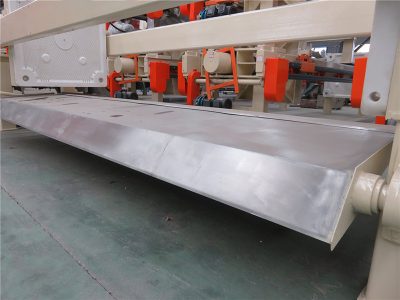 The drip tray of the filter press is a liquid collection device installed under the filter plate. When the filter press is feeding, part of the liquid leaks from the bottom of the filter plate flows into the flap, and flows downstream to both sides of the filter press. Collect into the concentration pool through the filtrate collecting groove.
The drip tray of the filter press is a liquid collection device installed under the filter plate. When the filter press is feeding, part of the liquid leaks from the bottom of the filter plate flows into the flap, and flows downstream to both sides of the filter press. Collect into the concentration pool through the filtrate collecting groove.
During the production filtration process, the automatic flipping system is in a closed state to collect the filtrate or flushing liquid and introduce it into the collecting tanks on both sides. When unloading the filter cakes, the system is open to ensure the complete fall of the filter cake and can be collected using a sludge dumpster. The automatic turning plate system can not only collect the liquid dripping from the filter plate but also prevent the filter cakes from getting wet.
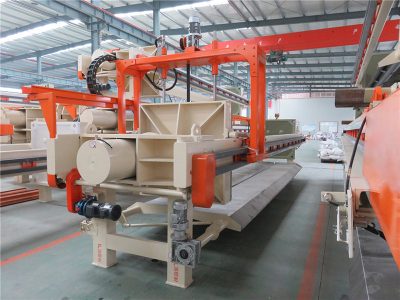 The Automatic Filter Cloth Washing system is a device installed above the filter press to clean the filter cloth. The device consists of a moving cleaning rack, a moving cleaning rod, a high-pressure cleaning pump, etc. The filter cloth is cleaned after the unloading is completed. , generally cleaning once after multiple working cycles, and spraying high-pressure water through the cleaning nozzle for cleaning. Use high-pressure water to automatically clean and smooth the filter cloth, thereby enhancing the filtration speed of the filter cloth, extending the service life of the filter cloth, and ensuring the filtration effect.
The Automatic Filter Cloth Washing system is a device installed above the filter press to clean the filter cloth. The device consists of a moving cleaning rack, a moving cleaning rod, a high-pressure cleaning pump, etc. The filter cloth is cleaned after the unloading is completed. , generally cleaning once after multiple working cycles, and spraying high-pressure water through the cleaning nozzle for cleaning. Use high-pressure water to automatically clean and smooth the filter cloth, thereby enhancing the filtration speed of the filter cloth, extending the service life of the filter cloth, and ensuring the filtration effect.
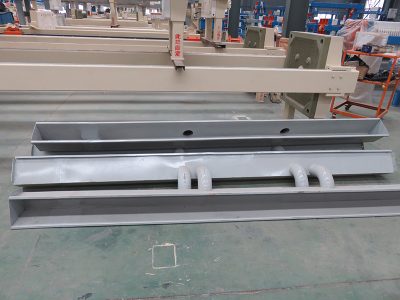 The Filtate Collecting Groove(drip gutter) is a piece of equipment supporting the filter press. This equipment is often used to collect, collect and separate liquids flowing out of filter presses. The design and functionality of drip tray can vary depending on the specific application, but their primary goal is to efficiently collect liquids and separate them into their different components, such as liquids and solids or liquids and gases.
The Filtate Collecting Groove(drip gutter) is a piece of equipment supporting the filter press. This equipment is often used to collect, collect and separate liquids flowing out of filter presses. The design and functionality of drip tray can vary depending on the specific application, but their primary goal is to efficiently collect liquids and separate them into their different components, such as liquids and solids or liquids and gases.
For example, in the chemical industry, drip tray may be used to separate and collect liquid by-products produced during chemical reactions. In sewage treatment, drip tray can be used to separate solid particles and other impurities in wastewater. In the oil and gas industry, drip tray may be used to collect and separate liquids, gases and solid particles produced by oil wells.
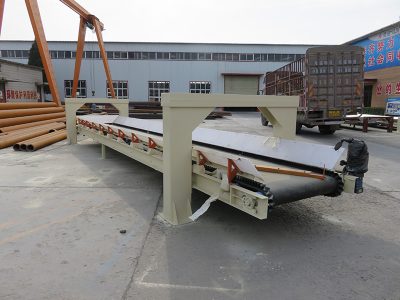 The belt conveyor is a continuous conveying equipment that uses cotton canvas, nylon, polyester canvas and steel wire core belts as traction components. It can be widely used in coal, metallurgy, mining, port, chemical industry, light industry, petroleum, machinery and other industries.
The belt conveyor is a continuous conveying equipment that uses cotton canvas, nylon, polyester canvas and steel wire core belts as traction components. It can be widely used in coal, metallurgy, mining, port, chemical industry, light industry, petroleum, machinery and other industries.
Its function is to transport sludge, various lumps, granular and other bulk materials after dehydration by filter presses and vacuum belt filter presses. Belt conveyors have the advantages of large conveying capacity, adjustable speed, and high conveying capacity. It has strong climbing ability, low operating cost, easy maintenance, and is conducive to the automatic control of the conveying system.
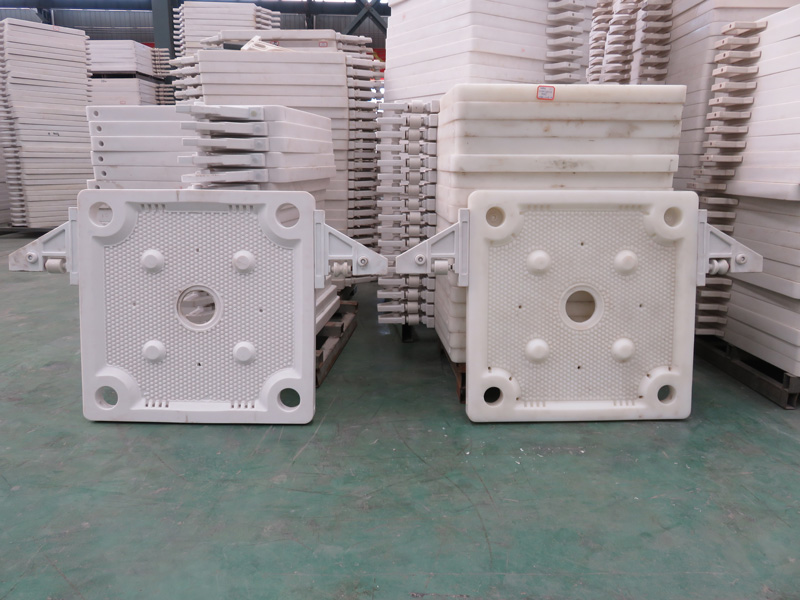
A filter press plate is a component of a filter press machine used in solid-liquid separation processes. We can make cast iron plate and frame filter plates,304/316 stainless steel filter plates, PP filter plates, round filter plates, high-pressure filter plates that can bear 2.0 Mpa pressure, etc.
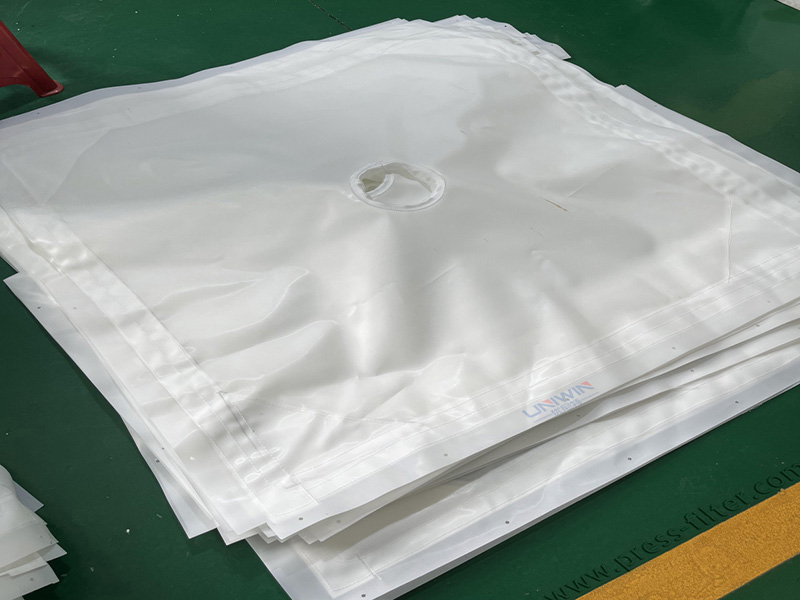
A filter press cloth is a specially designed fabric used primarily for solid-liquid separation processes. The filter cloths are crucial to the filter press’s operation.Filter cloths can be made from a variety of materials, including polyester, polypropylene, nylon, polyethylene, and others.
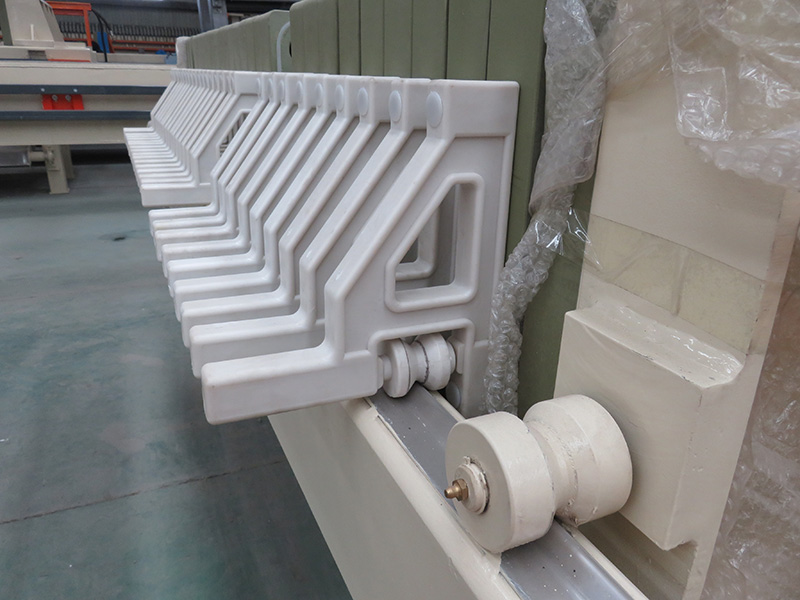
The filter plate handle plays the role of fixing the filter plate, carrying biological filter material, and separating the water and gas distribution chamber. Common filter plate handles can be divided into wheeled handles and wheelless handles.
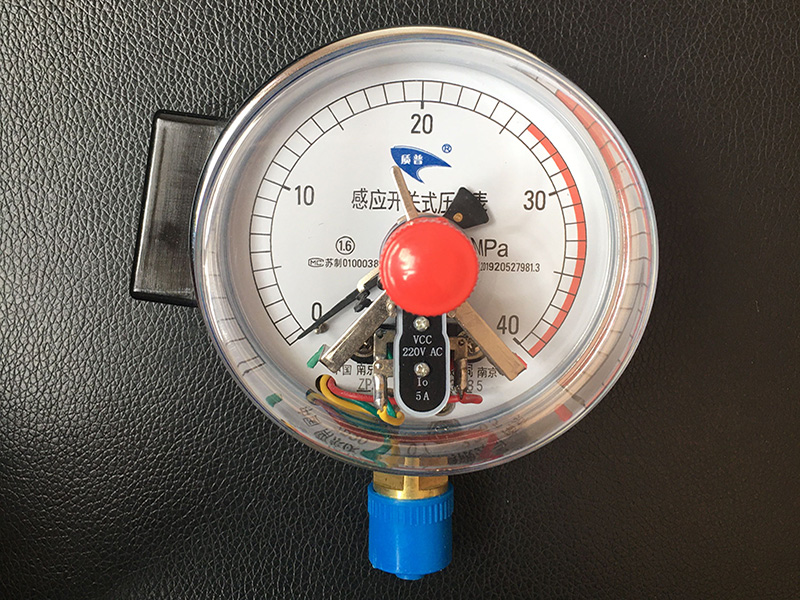
A filter press pressure gauge is a device that measures pressure during filter press operation. The operator can use the pressure gauge to understand the pressure inside the filter press in real time so that necessary adjustments and controls can be made to ensure the normal operation of the filter press.
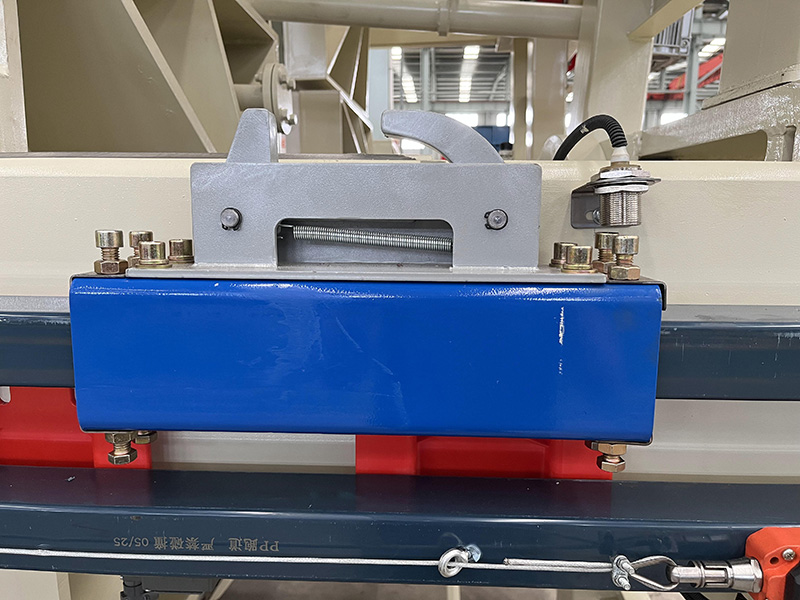
A filter press pressure gauge is a device that measures pressure during filter press operation. By monitoring the pressure gauge, the operator can understand the pressure inside the filter press in real-time so that necessary adjustments and controls can be made to ensure the normal operation of the filter press.
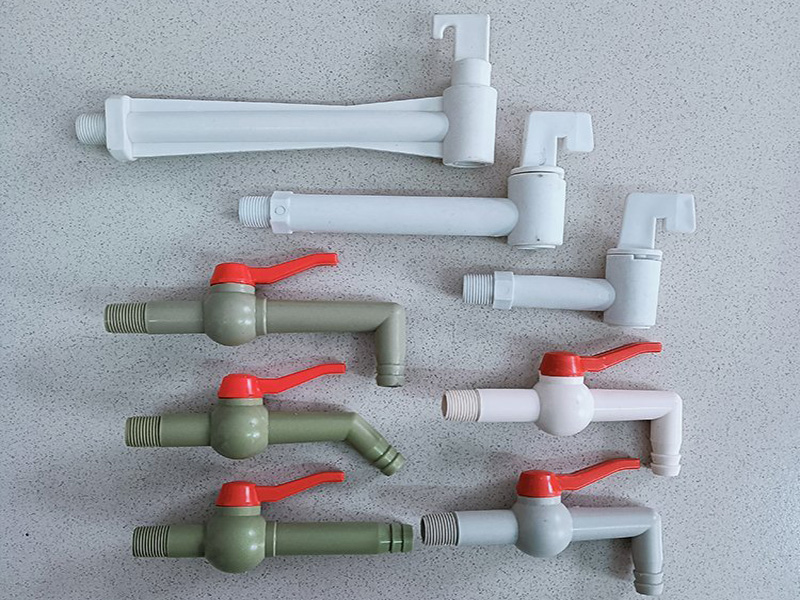
The filter press water taps are installed on the outlet pipes on both sides of the filter plate of the open-flow filter press. It is a device that opens and closes the water medium and controls the water flow at the outlet of the filter press. It is suitable for different filtration processes.
1. Turn on the power switch, and the power indicator light will turn on;
2. Press the “start button,” and the feed pump starts to work;
3. Move all filter plates to one end of the thrust plate and place them between the two beams;
4. Start the compression button, and the piston pushes the compression plate to compress all filter plates. When the compression force reaches the pressure value, the hydraulic system automatically jumps to maintain pressure. Press the off button, and the feed pump stops working;
5. Hidden flow: Open the filtrate valve to release the liquid. Open flow: Open the faucet to release liquid. At the same time, open the feed valve and perform filtration;
6. After the filter chamber is full, close the feed valve and stop filtering;
7. If the filter press is equipped with an automatic flushing system, open the water nozzle, then open the washing water valve, and enter the water for washing;
8. Start the feed pump, press the compression button, wait until the locking nut is tightened, and then press the release button. After the compression plate returns to the appropriate working gap, turn off the motor;
9. Pull open the filter plate to unload the filter cakes;
10. Check the filter cloth and filter plate, and clean the residue on the joint surface. If there are no problems, you can enter the next work cycle.
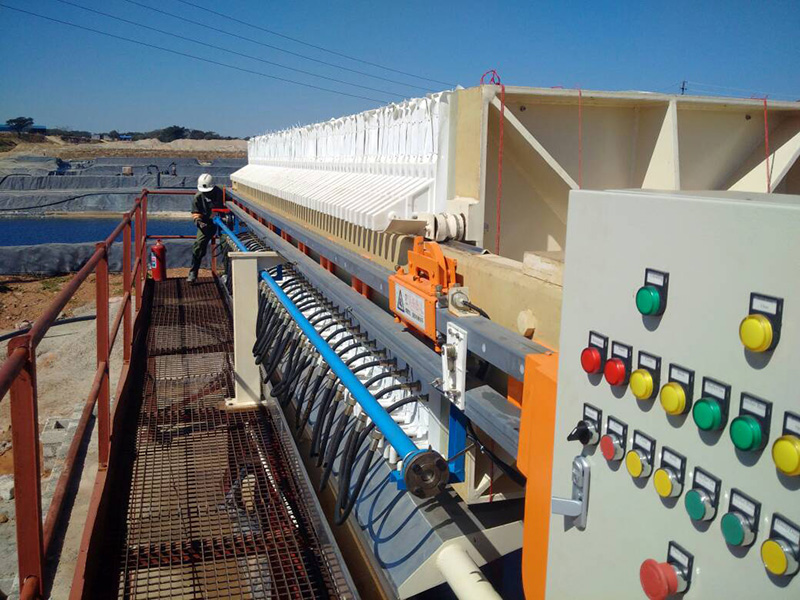
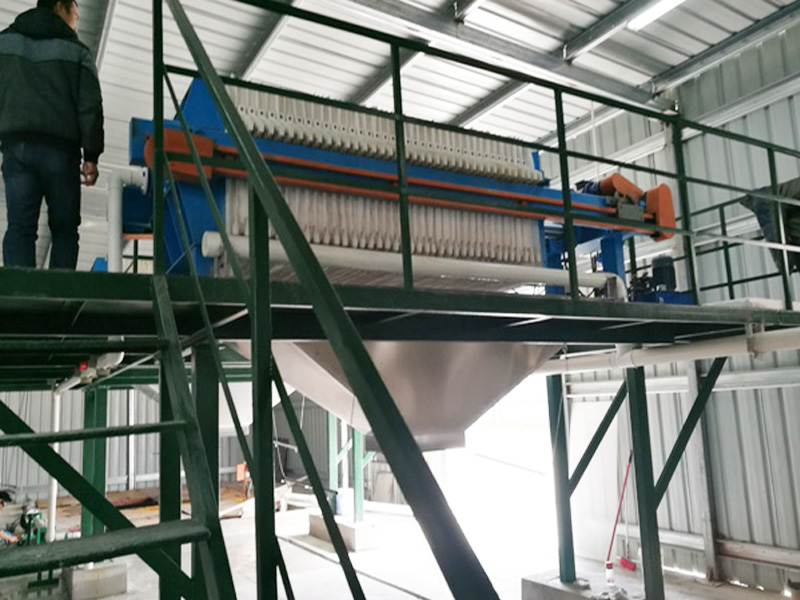
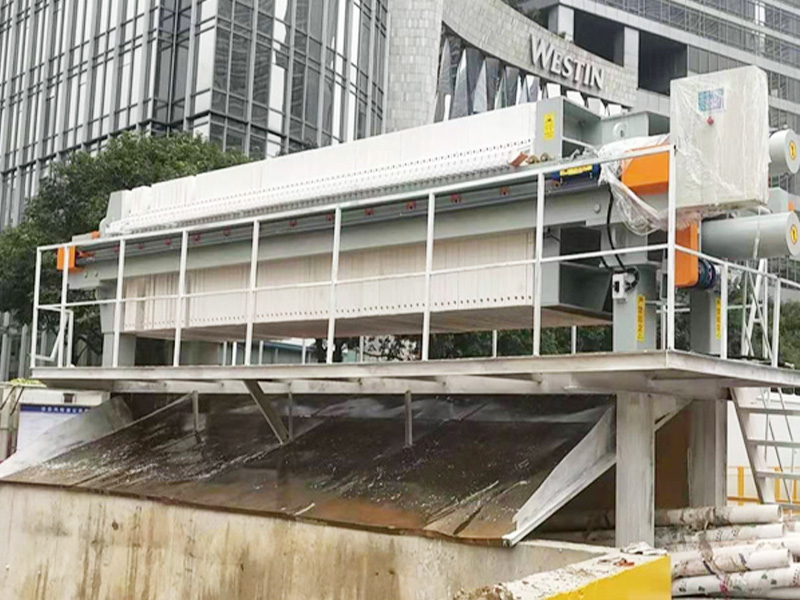
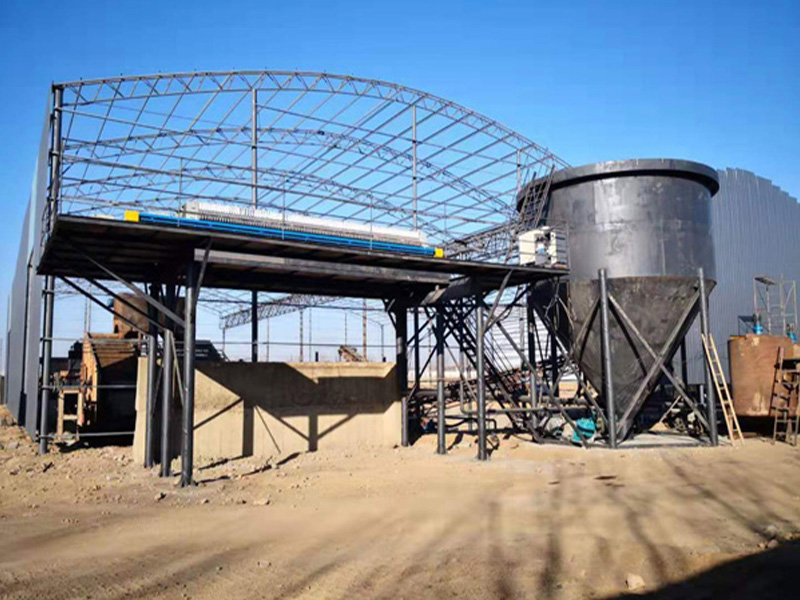
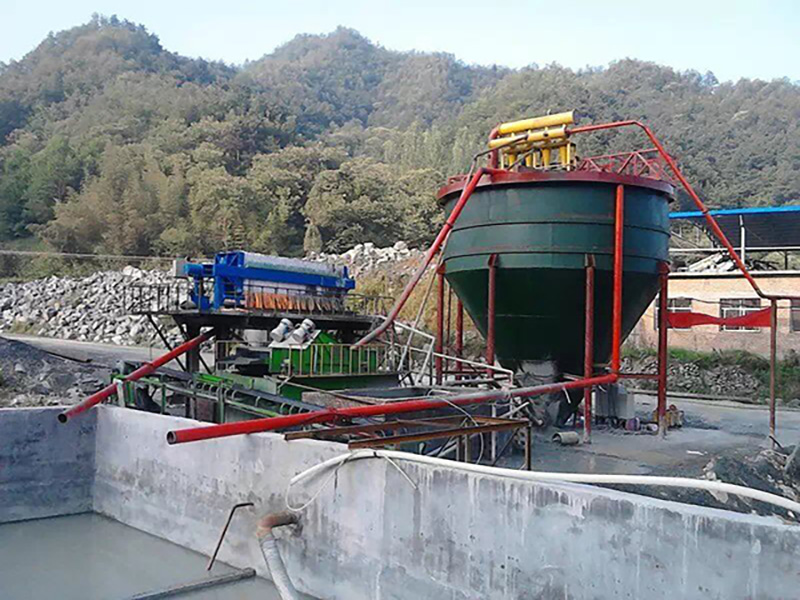
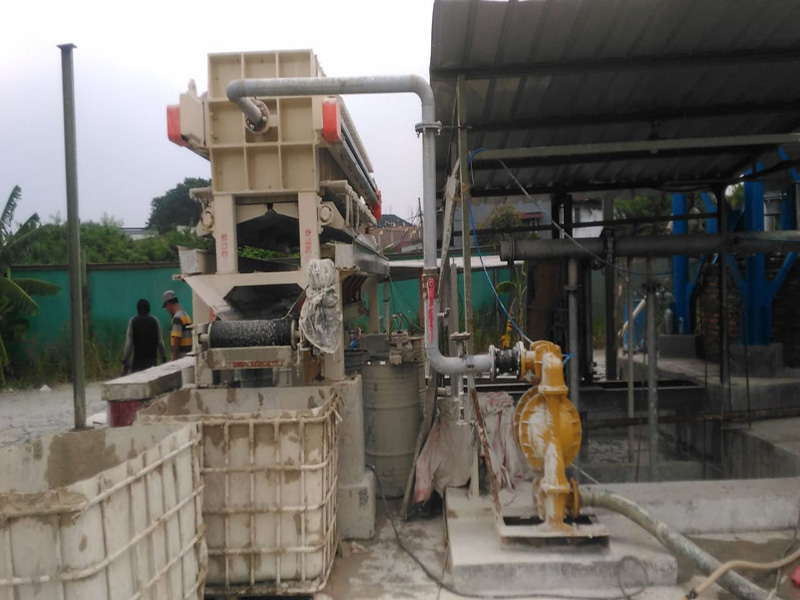
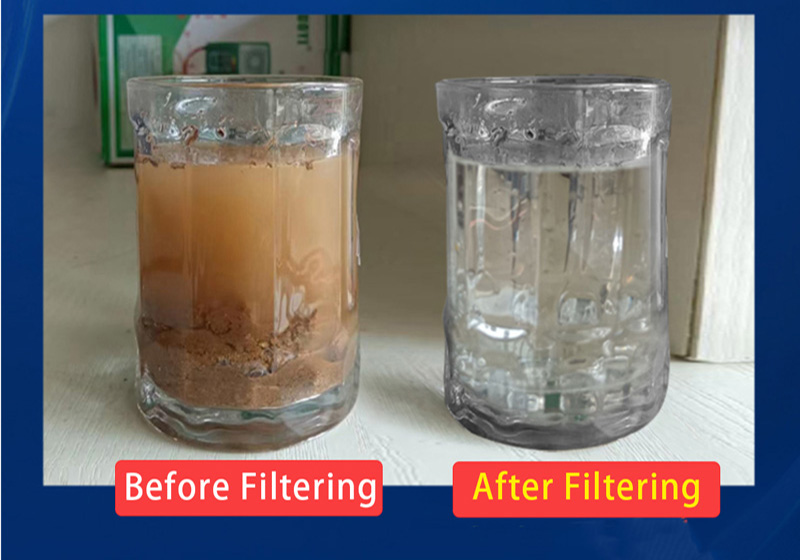
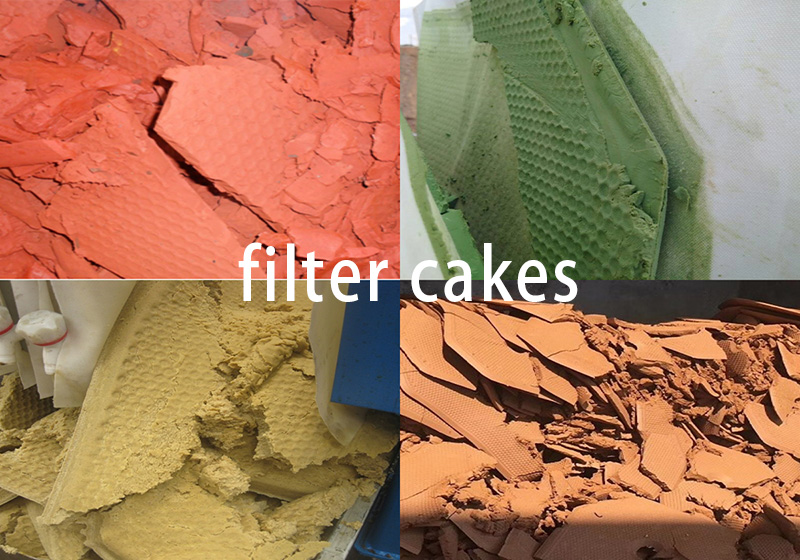
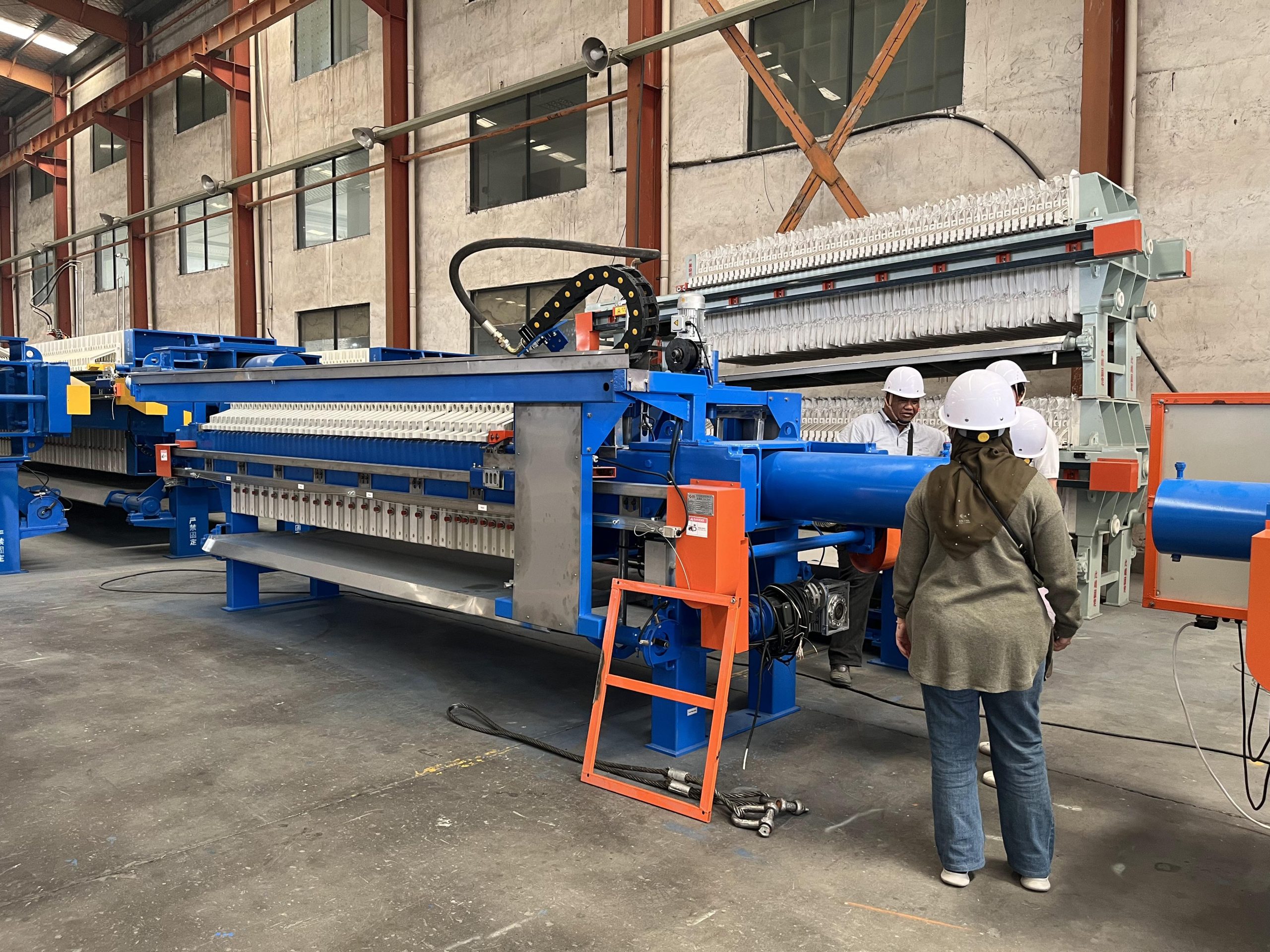
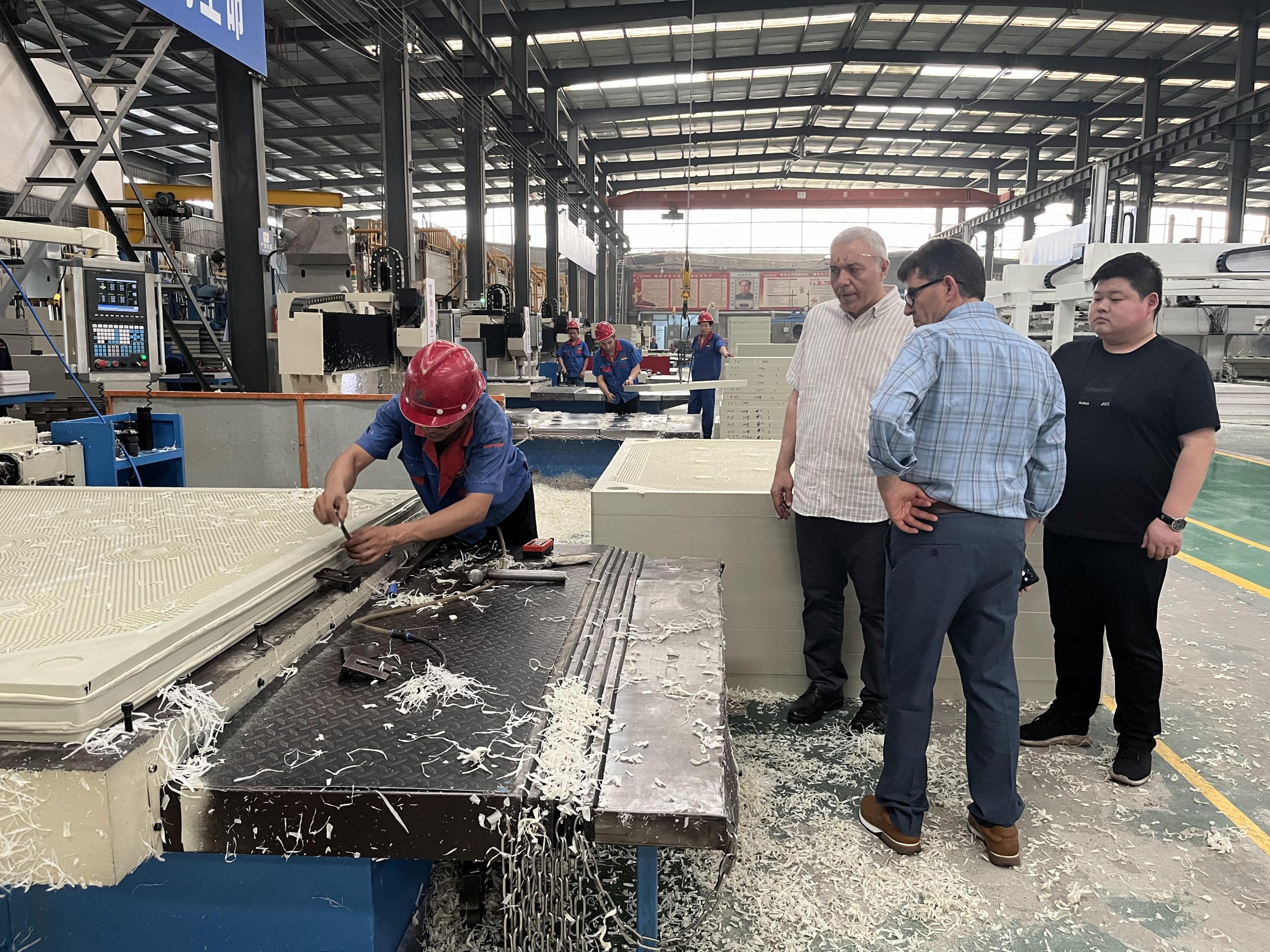
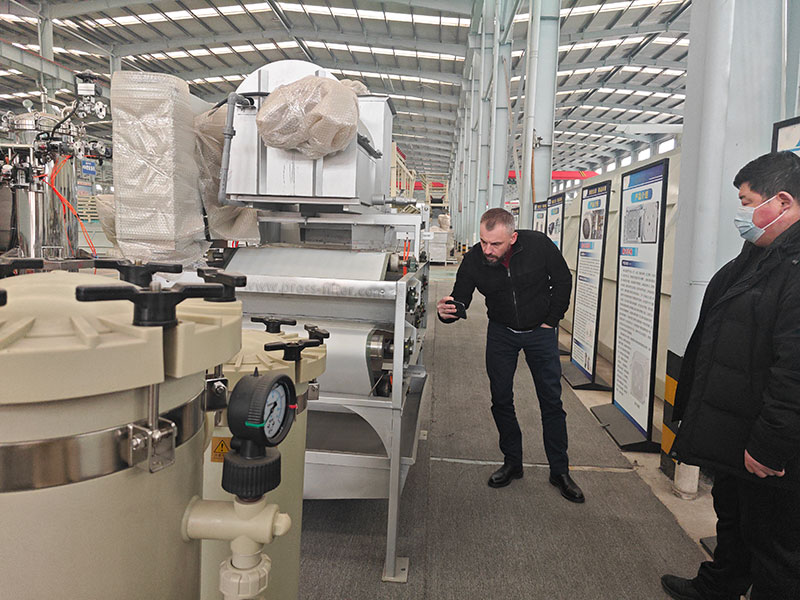
A filter press is a mechanical device used to separate liquids and solids by applying pressure to separate liquids from solid particles. These solid particles can be solid particles or slurries suspended in liquids, such as solid waste in sewage, solid matter in chemical treatment processes, residues in food processing, etc.
1. The liquid mixture to be treated is introduced into the automatic filter press.
2. The slurry passes through the filter cloth, while the solid particles are retained on the filter cloth to form a solid filter cake.
3. During the filtration process, liquid is separated and collected to form filtrate.
4. Once filtration is complete, open the plate to discharge the filter cakes, transfer the filter cakes away by the belt conveyor under the filter press, to make it available for further processing or disposal.
1. Processing capacity: First, determine how much processing capacity your application requires. This will determine the size and capacity of the filter press. Different types of filter presses have different processing capacity ranges, so choose the right size based on your needs.
2. Solid-liquid separation performance: Different filter press types and specifications have different solid-liquid separation performance. You need to consider the nature of the solids and liquids involved in your application to determine which type of filter press is best suited.
3. Pressure and temperature requirements: Determine the required pressure and temperature range according to the needs of the application. Different types of filter presses can operate under different pressure and temperature conditions, so make sure the machine you choose can meet these requirements.
4. Automation level: Determine whether your application requires automated control and monitoring capabilities. Some filter presses are equipped with advanced automatic control systems that increase efficiency and reduce operator intervention.
1. Make sure operators have received appropriate training on equipment operation and safety procedures.
2. Strictly control and monitor the pressure to ensure that it does not exceed the design working pressure range of the equipment.
3. Clean and maintain the equipment regularly to ensure the performance and life of the equipment.
4. Regularly monitor and record the operating parameters of the filter press so that problems can be discovered promptly and corrective measures can be taken.
5. Make sure there are emergency shutdown devices and emergency handling plans near the equipment.
The moisture content of the filter press has a lot to do with the type of sludge and the treatment process. It cannot be generalized, but it has a rough range for reference. The moisture content of the mud pressed out by the plate and frame filter press can usually reach 50— 75%, the moisture content of the membrane filter press is 30-60%, and the high-pressure filter press can squeeze the waste residue to a moisture content of less than 30%.
The work of the filter press will go through four stages: feeding, filtering, pressing and discharging. Therefore, in order to achieve the purpose of appropriately reducing the moisture content of the filter cake, the time of this process can be intentionally increased.
Copyright © 2023 China Uniwin Filter Press | All Rights Reserved.